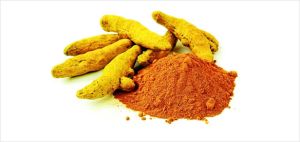
Turmeric Extract
Turmeric as it is widely known, has been used in Indian systems of medicine for a long time. In India it is popularly known as "Haldi". Haldi is being used in India since time immemorial and forms an important ingredient in cooking. In religious festivals also dried rhizome or powder forms regarded as a auspicious article in all religious observances in Hindu households. Curcuma longa is used for numerous medicinal problems ranging from constipation to skin disease goes back to 600 BC as mentioned in literature. Current traditional Indian medicine claims the use of its powder in the treatment of biliary disorders, anorexia, cough, diabetic wounds, hepatic disorder, rheumatism, anti-inflammatory, and sinusitis. The major constituents are curcuminoids, the yellow coloring principles, of which curcumin constitutes 50-60%.The extract is derived from the rhizomes of Curcuma longa through solvent extraction.
...more
Tulsi Extract
Tulsi extract, Properties Uses : Ocimum sanctum (holy basil), called Tulsi in India, is ubiquitous in Hindu tradition. Perhaps its role as a healing herb was instrumental in its "sacred" implication. Ocimum sanctum(Tulsi) is perhaps the most common and most revered of all household plants in India. Tulsi is an erect sweet -scented pubescent herb, 30-100cm in height , growing in abundance near cultivated field gardens and waste lands. Its leaves, seeds ands whole plant is useful.
...more
Tribulus Terrestris
We are offering Tribulus Terrestris. trade name : gokshru / tribulus terresteris botanical/scientific name : tribulus terresteris active principle/marker : saponins 40% - 60% identification : gravimetry quantities : 25, 50, 100- 2000 kgs description : brown coloured hydroscopic powder with characteristic taste. properties /uses: tribulus terresteris has a long history of use in the ayurvedic and unani systems of india. it is primarily considered an aphrodisiac and diuretic. it also boosts the production of testosterone. tribulus is a genus of plants found in many warm regions. it has a widespread use as a dietary supplement claimed to increase the body's natural testosterone levels and thereby improve male sexual performance and help build muscle. tribulus has been shown to enhance sexual behavior in some animal studies by stimulating androgen receptors in the brain. we can provide you tribulus terrestris extract and tribulus plant because we are one of the major herbal tribulus terrestris.
...more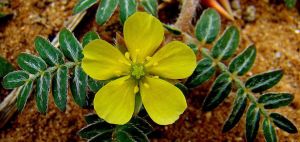
Tribulus Terrestris
Tribulus is a genus of plants found in many warm regions. It has a widespread use as a dietary supplement claimed to increase the body's natural testosterone levels and thereby improve male sexual performance and help build muscle. The thorny fruit is said to have the maximum content of steroidal saponins. However, the whole plant is used in its dry form for extraction due to its feasibility. Research on Tribulus has shown to enhance sexual behavior in some animal studies by stimulating androgen receptors in the brain.
...more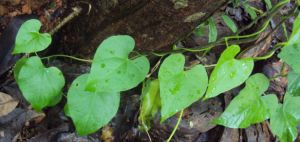
tinospora cardifolia
This extract is derived form the roots of Tinospora cordifolia (commonly known as guduchi) belonging to family Menispermaceae. According to the Ayurvedic lexicons Tinospora cordifolia is referred to as 'Amrita'. The term 'Amrita' is attributed to this drug in recognition of its ability to impart youthfulness, vitality and longevity to its patron. It therefore figures as one of an important 'Rasayana' drug in the Vedic scriptures. In modern medicine it is well known for its adaptogenic and immunomodulatory activities. This plant is widely used in traditional system of medicine to treat jaundice, rheumatism, urinary diseases, intermittent fever and eye aliments.
...more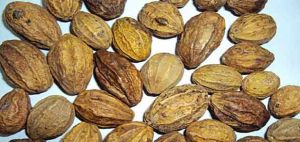
Terminalia Chebula
It is useful in inflammation, indigestion, constipation, haemorrhoids, jaundice, cough, skin diseases, cardiac disorders and general debility. The dried fruit of Terminalia chebula, Emblica officinalis and Terminalia bellerica has been used in Ayurvedic formulation under the term TRIPHALA in different form like Pills, Powder, etc. for hundreds of years.
...more
Terminalia Belerica
The extract from the fruit of Terminalia belerica traditionally called as bibitaki , well reputed as rasayana in Ayurveda, is the best single herb for controlling Kapha. It is a powerful rejuvenative herb that nourishes the lungs, throat, voice, eyes and hair. It expels stones or other kapha-type accumulations in the digestive, urinary, and respiratory tracts. It is unique in being both laxative and astringent, so it purges the bowels, while simultaneously toning the tissues of the digestive tract. It provides strength to the tissues of the sense organs. It is one of the constituents of famous preparation "Triphala" which finds use in wide array of areas ranging form hair care, as laxative, in headache, leucorrhoea, liver diseases to gastro-intestinal complaints. The overall tonic effect of this fruit has been known for thousands of years in India and other Asian countries.
...more
Asparagus Racemosus Plant
It is often referred to as the most important herb in Ayurvedic medicine for women. Used internally for infertility, loss of libido, threatened miscarriage, menopausal problems. It both nourishes and cleanses the blood and the female reproductive organs. It is a good food for menopause or for those who have had hysterectomies, as it supplies many female hormones. It nourishes the ovum and increases fertility. This herb is known to increase positivity and healing power.
...more
Saptrangi
Its principal use in traditional, Ayurvedic medicine for the treatment of diabetes is near legendary. It was believed to be so potent that patients were told to simply drink water left to sit overnight in a cup made from the wood of the plant The hard root of this plant is typically used in the extraction part. It is distinct by yellow outer layer that may be mistaken for stem bark. Though the plant has quality actives in its stem, the finest source of saponins are from its roots. The root has to be put through fine milling to ensure proper extraction and the roots are extracted in the desired medium of extraction and finds application in vitiated conditions of Vatha, diabetes, haemorrhoids, inflammations, leucorrhoea, leprosy, skin diseases, amenorrhoea, dysmenorrhoea, wounds, ulcers, hyperhidrosis, hepatopathy, dyspepsia, flatulence, colic and spermatorrhoea.
...more
Salacia Reticulata Extract
Salacia Reticulata is a climbing shrub with blackish branches. It has Salanisol as active principle for diabetic treatment. Yet another Ayurvedic herb holds great promise for management of weight and blood sugar issues. Salacia Reticulata is a large, woody climber found in the rain forests of Sri Lanka and parts of western India. The roots are acrid, bitter, Thermogenic, urinary astringent, anodyne, anti- inflammatory, depurative, vulnerary, liver tonic and stomachic. Its principal use in traditional, Ayurvedic medicine for the treatment of diabetes is near legendary. It was believed to be so potent that patients were told to simply drink water left to sit overnight in a cup made from the wood of the plant The hard root of this plant is typically used in the extraction part. It is distinct by yellow outer layer that may be mistaken for stem bark. Though the plant has quality actives in its stem, the finest source of saponins are from its roots.
...more
Safed Musli
Safed Musli has been one of the chief ingredients in Ayurveda and other local folklore medicines for ages. According to Indian Ayurvedic concept Safed Musli is among the 20-odd species of native medicinal plants that enjoy extensive therapeutic application and an expansive global market. The extracts from dried roots of Safed Musli are used as an aphrodisiac as they are rich in glycosides. The recognized effect of Safed Musli as a sex stimulant or in increasing male potency has often made the product be referred to as the Indian Viagra.
...more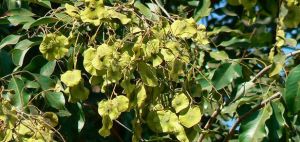
pterocarpus
The Indian traditional system of medicine prescribed this plant for diseases including diabetes mellitus called madhumeh in Sanskrit. The heart wood is astringent, bitter acrid, anti inflammatory, anthelmintic, anodyne. The aqueous extract from the heart wood of the tree demonstrates to reduce the glucose absorption from the gastrointestinal tract, and improve insulin and pro-insulin levels. It also said to be effective in beta-cell regeneration. Beside diabetes, it is also good for elephantiasis, leucoderma, diarrhoea, dysentary, rectalgia, cough and greyness of hair.
...more
Pipper logum
Odor is aromatic and the taste is highly pungent. Pepper contains volatile oil, the crystalline alkaloids: piperine, piperidine and piperettine, and a resin. The alcoholic extract taken from the pippali or Long pepper contains the alkaloid piperine (about 6%), which is slightly higher than that in black pepper.
...more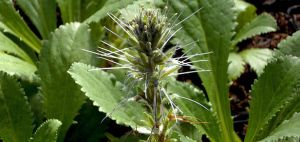
Picrorhiza Kurroa
It has a cooling effect and is used as a cardiotonic, antipyretic, anthelmintic and laxative. It is also used to alleviate stomachache, and is believed to promote appetite. As per Ayurvedic principles , Kutki is useful in ‘Kapha’, billow fever, urinary discharge, hiccup, blood troubles, burning sensations, leucoderma, and jaundice. The extract from the plant Picrohiza kurroa is standardized to contain not less than 4% kutkin. Kutki extract shows significant ability to protect the liver against chemicals and microbes. The hepatoprotective effects of Kutki extract are found to be more potent than silymarin (milk thistle) in maintaining healthy liver functions.
...more
Ocimum Sanctum
Tulsi is antiseptic and antifungal. It stimulates the immune system by increasing the production of antibodies. Tulsi tea is rich in antioxidants and helps reduce stress. Tulsi in several formulations to enhance immunity and metabolic functions as well as in the management of respiratory problems (Shwas -Kasa). A variety of biologically active compounds have been isolated from the leaves including ursolic acid, apigenin and luteolin. The standardized extract of tulsi is said to contain 1-2% Ursolic acid derived from aqueous-alcoholic extraction.
...more
Mucuna Pruriens
This extract derived form the seed of Mucuna pruriens commonly known as Kawach. This widely available Indian herb is historically been used as an anti-parkinsons. Mucuna pruriens is documented to contain the highest amounts of L-DOPA and was used by physicians of yore, due to its ready availability in the forests and the better results it yielded when used for the treatment of diseases of the nervous system.The seeds that have the main source of L-DOPA a neurotransmitter precursor is in great demand today.
...more
Momordica charantia
The extract from Momordica Charantia (bitter melon as it is locally referred) is a proven hypoglycemic agent. One of the active principles responsible for this action is charantin, which is composed of a mixture of beta-sitosterol-beta-D-glucoside and 5,25 stigmadien-3-beta-ol glycoside. Therefore, it is important that the extract be standardized for both total bitter principles and charantin. Momordica charantia is a potential herbal alternative for blood sugar management, particularly in non-insulin dependent diabetes. An extract standardized for all the active principles would have proven efficacy in this regard. The standardized extract of Momordica charantia should contains bitter principles and charantin.
...more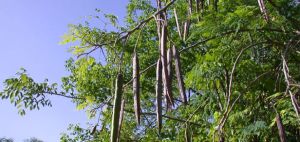
Moringa oleife
The leaves are highly nutritious, being a significant source of beta-carotene, Vitamin C, protein, iron and potassium. The leaves are cooked and used like spinach. Its leaves are full of medicinal properties. The tree is a good source for calcium and phosphorus. In Siddha medicine, the drumstick seeds are used as a sexual virility drug for treating erectile dysfunction in men and also in women for prolonging sexual activity. The Moringa seeds yield 38–40% edible oil (called ben oil, from the high concentration of behenic acid contained in the oil) that can be used in cooking, cosmetics, and lubrication.
...more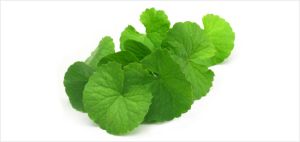
MANDUKAPARNI
GOTU KOLA (Centella Asiatica) is also a very popular herb in India for longevity and mental function. It is used to decrease fatigue and depression, and to stimulate the sex drive. It energizes the central nervous system, and aids the circulatory system, soothes and minimizes varicose veins and helps to minimize scarring. It is also useful in repairing skin and connective tissues and smoothing out cellulite.
...more
Kalmegh
Properties Uses : Kalmegh is a bitter annual erect herb with small white flowers. The fruit is a pod with 10-12 seeds which are yellowish brown and glabrous. The plant is found in the plains throughout India and Sri Lanka. The plant is collected from wild sources for domestic consumption.
...more
JAMUN
All parts of the java plum can be used medicinally and it has a long tradition in alternative medicine. The leaves are said to be antibacterial, and are used for strengthning the teeth and gums.. The fruit and seeds are sweet, acrid, sour, tonic, and cooling, and are used in diabities, diarrhoea and ringworm. The bark is astringent, sweet sour, diuretic, digestive and anthelmintic. The extraction process is carried our using the fruitseed in particular to obtain optimum saponins from the product.
...more
Fresh Vegetables
The close proximity to agriculture lands and rich soil conditions clubbed with shortage of good quality herbal raw material encouraged us to propagate farming. In 2009, we invested in over 60,000 sqft of Green house for Capsicum farming and have close to 3 Acres of open fields with drip irrigation. We pay lot of emphasis to GAP (Good Agriculture Practices) and have adopted approved cultivation methods.
...more
Gymnema Sylvestre Extract
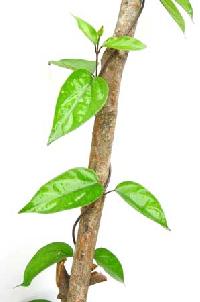
Gymnema Sylvestre
We are offering Gymnema Sylvestre. trade name : gudmar / gymnema sylvestre botanical/scientific name : gymnema sylvestre active principle/marker : gymnemic acid 25% - 75% identification : gravimetry quantities : 25, 50, 100- 5000 kgs description : green coloured free flowing powder with bitter taste properties/uses: gymnema sylvestre plant known as gudmar in its native india, (gymnema sylvestre) is a tropical plant of milkweed family. gymnema sylvestre extract or gymnema plant has a long history of medicinal use in india for honey urine “or what we call diabetes. its ancient sanskrit name means “sugar destroyer” which translates to various native languages. human and animal studies confirm that gymnema has pronounced effects on blood sugar, at least among diabetics. within the past few decades researchers have determined that gymnema extracts play a role in the treatment of type 1 diabetics, who typically need daily injections of insulin to control the disease. gymnema taken orally lowers diabetics blood glucose levels and improves blood fat and cholesterol profiles. it is also used as a digestive tonic and for weight reduction as it helps to block the absorption of sugar in the digestive tract. if you want to buy any such herbs or plants then you can truly rely on us because we are one of the prominent gymnema sylvestre manufacturer based in india.
...moreBe first to Rate
Rate ThisOpening Hours